Submitted by WA Contents
Berlin’s Tempelhof Airport transforms into Germany’s largest refugee camp
Germany Architecture News - Feb 29, 2016 - 12:58 16592 views
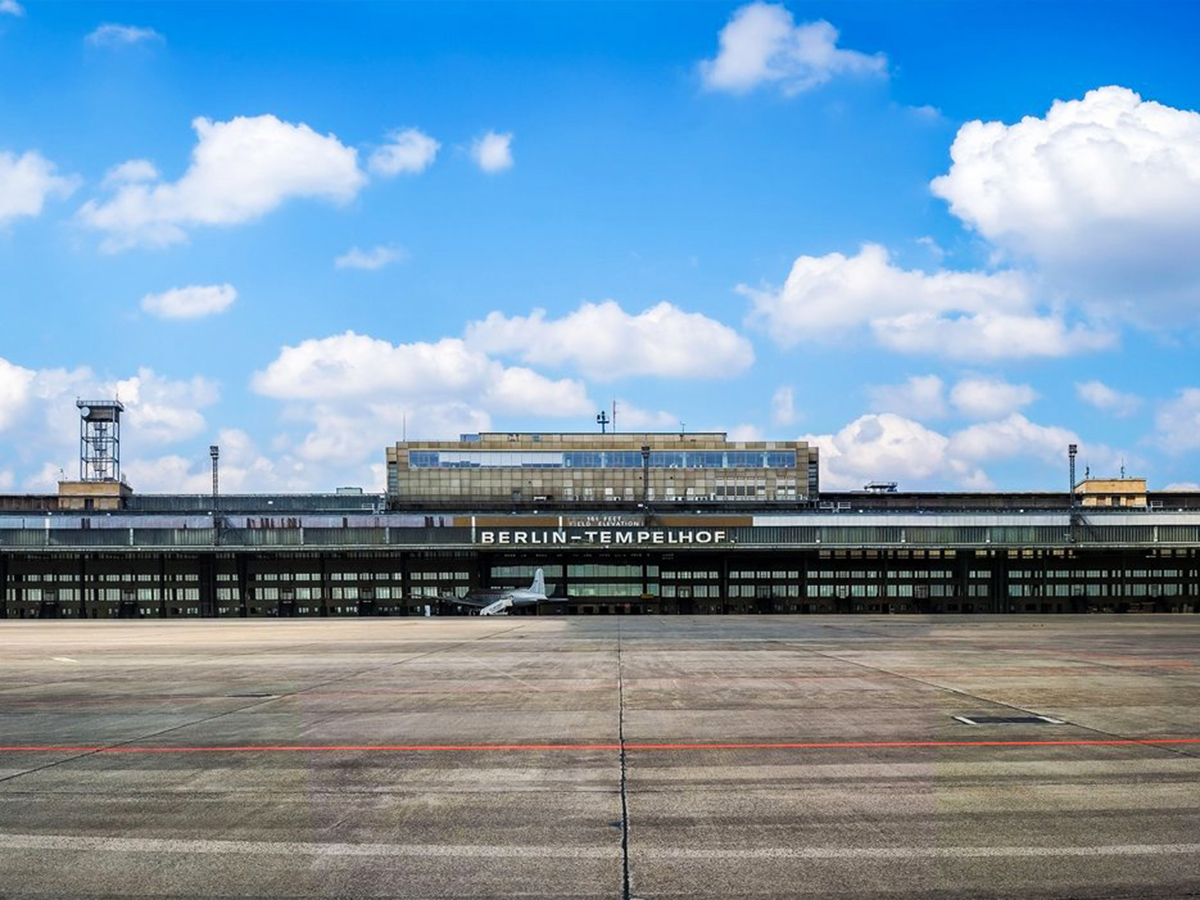
Berlin's Tempelhof Airport, the 'mother of all airports'. image courtesy of CN Traveler.
The Tempelhof Airport was first built 1927 in Berlin then the architect Ernst Sagebiel reconstructed this massive structure with a gigantic entrance to show a super-power of Nazi government in 1930s. It was a massive-scaled, a structured-extravanganza of Hitler's new Germany, which was terribly awaken through architecture. Covering 4 million square meter area in total, now, the contradictive Tempelhof Airport becomes the Germany's largest refugee camp, hosting 7,000 refugees from the city's around.
With its over-emblematic appaerance in the city of Berlin, the Tempelhof Airport has always been a controversial building due to its historical background and monumental architecture recently. This giant, over-sized structure has been tried to transformed into various architectural spaces through international competitions, which makes the building livable place. But, today, the building presents a more humanitarian approach for several unemployed people and refugees. The Berlin's government has declared a new law to allow extra space for refugees coming from Syria, Afghanistan, Iraq and elsewhere, mentioned in German news site Deutsche Welle.
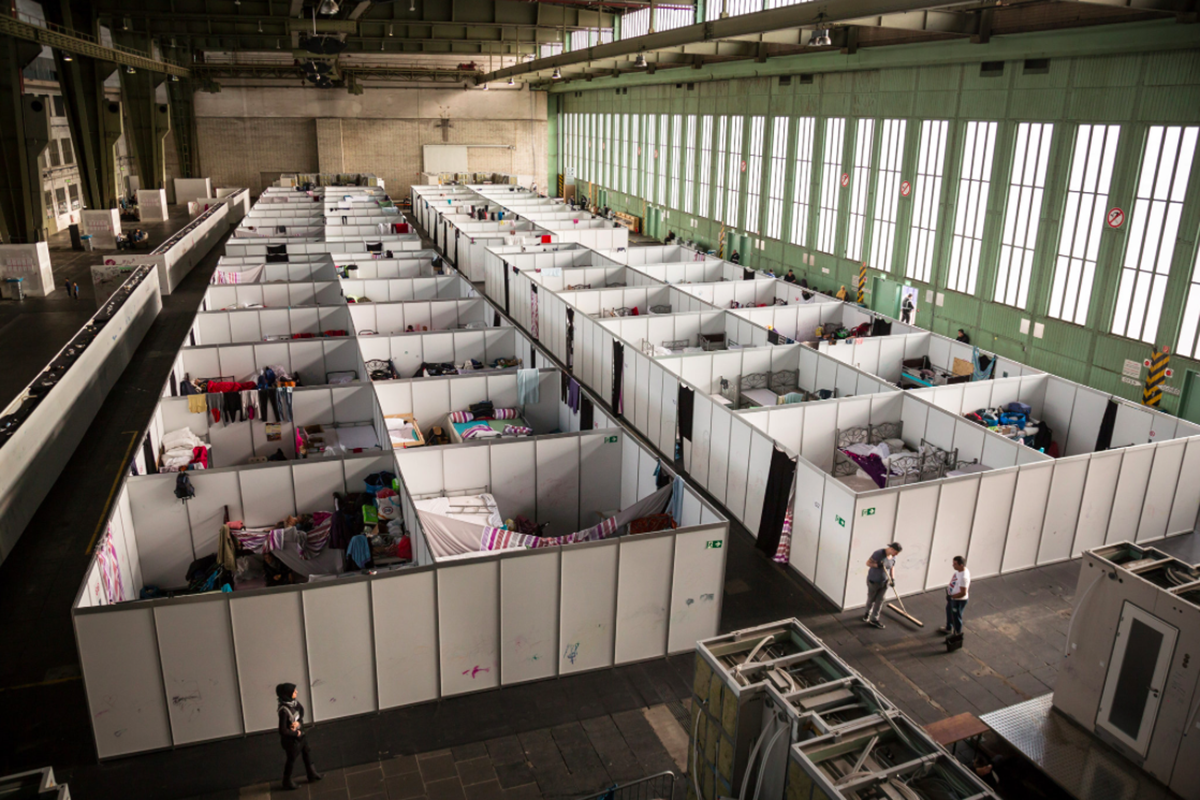
refugee camps in one of hangars. image © Gordon Welters for The New York Times.
With this new law-change, the huge flat park of Tempelhof will be converted into a biggest refugee shelter in Germany although many activists and opposition parties have warned this plan, it will only create a "ghetto" that will increase social tensions. The planned change will propose five further temporary buildings being built on the area, as well as sports areas, a kindergarten, a school and other facilities.
''We don't want anyone who has experienced war and terror to have to sleep on the streets," MP Daniel Buchholz told the parliament during the debate, when the law was passed.
“It’s not space designed for living,” Constanze Döll, a spokeswoman, noted of Tempelhof Projekt, the city agency that is responsible for the overall development. “It’s an aircraft hangar'' mentioned in New York Times. In addition to response these debates, city planners argue that ''it is a missing opportunity and now they can erect prefab housing for refugees not housed in hangars''.
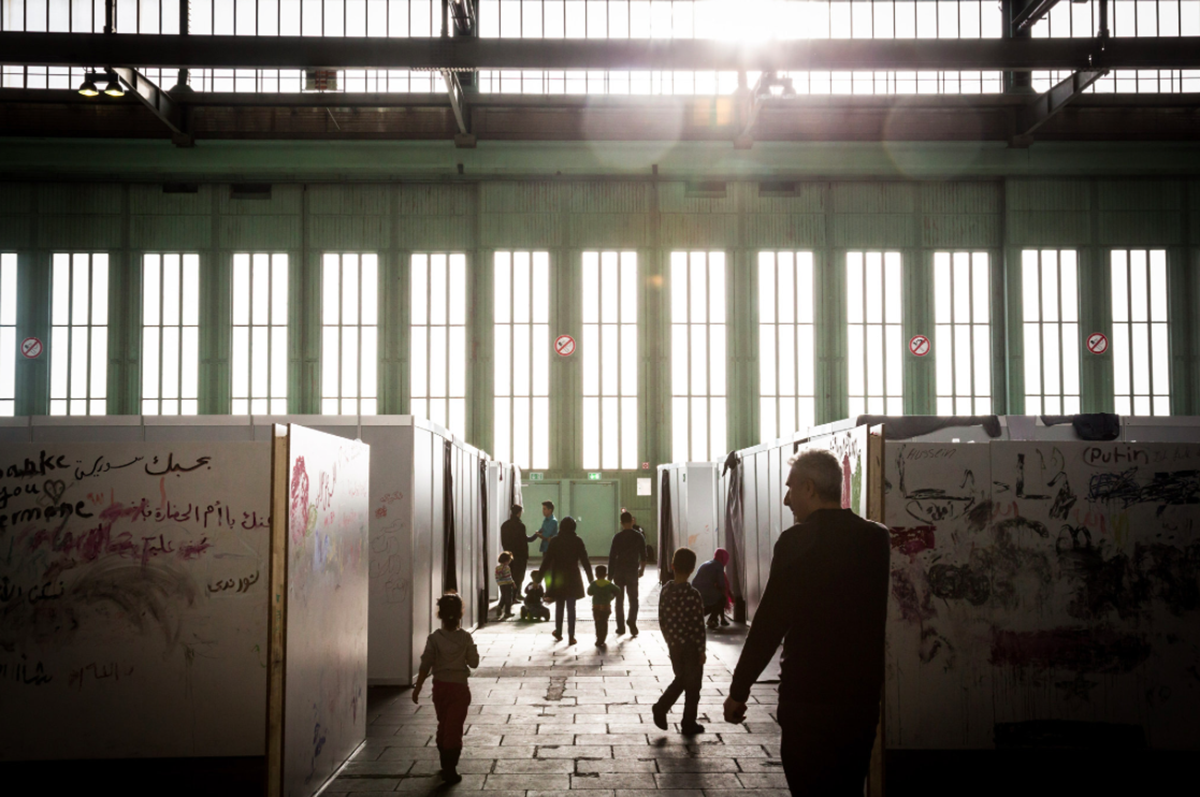
view from hangars and refugee shelters. image © Gordon Welters for The New York Times.
Antje Kapek, leader in Berlin's Green Party, rejected government's plan and she said that it will be "refugee village" as a "strategy of despair. "To date there is still no feasibility study for sheltering 7,000 people.'' "Acting quickly shouldn't lead to acting badly'' added Kapek. Another sign for refugee camps is “high noise protection required,” and says in a hangar whose vastness mutes any buzz from the 800 or so refugees currently accommodated there.
"Yes it's a warm animal barn," one refugee from Damascus told DW. "This place is good for animals, we thought, but if we talk about humans it's definitely different." He and his wife have been living in the hangars with ten others in one of the roofless "boxes" partitioned with canvas inside the hangars. Privacy is virtually impossible. "We try to cover around the bed and sleep - inside it becomes like a tomb," said the man, who didn't want to be named.

if the work is completed, the Tempelhof will house a total of 7,000 people in and around the building. image © Gordon Welters for The New York Times.
There are no cooking facilities, the only toilets are plastic and "smell bad," and the refugees have to get on a bus to shower at a separate tent. "We are afraid they plan to keep us here," the man said, when told of the plans to extend the camp.
Many new units will be containing a toilet, washbasin and shower for individual use, awaited hookup. But, now, one of the hangars accomodates in sparse 25-square-meter units formed by temporary screens, with six double bunk beds sleeping 12 with commune toilets and showers.
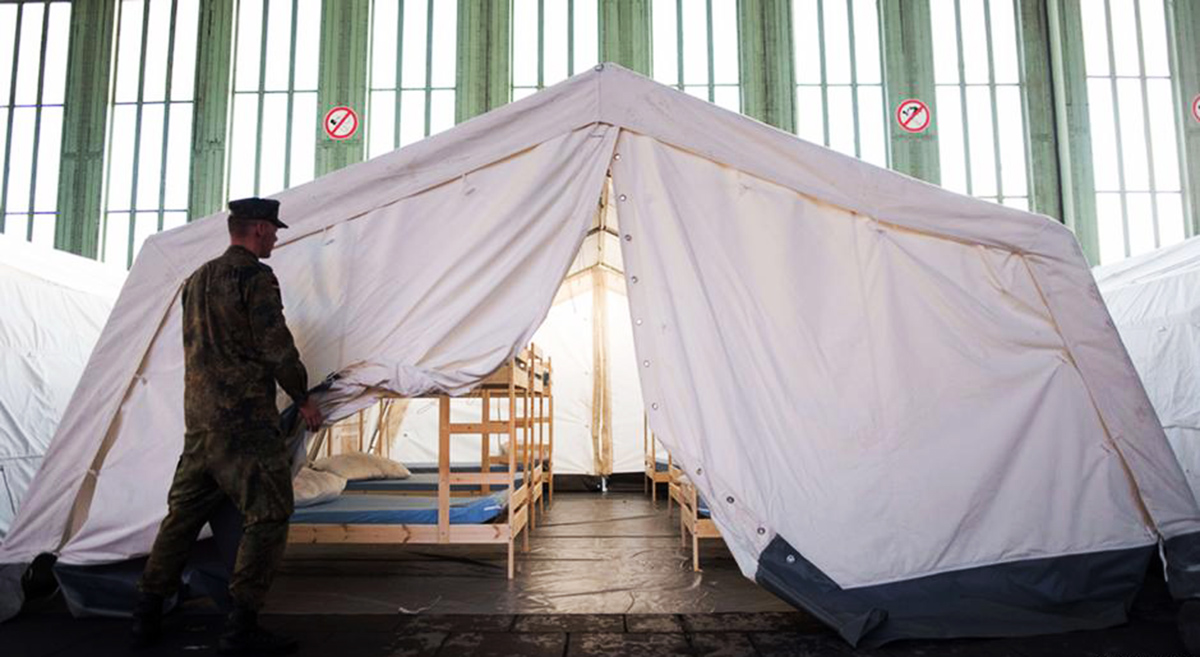
each unit houses up to 12 people in the refugee tents inside the hangars. image © Andrew Wasike, courtesy of Deutsche Welle.
The refugees also started to add their own layer to the space where they inhabited: message-based visualisations and graffiti on the white walls or flags and emblems of Iraq, Kurdistan and Afghanistan.
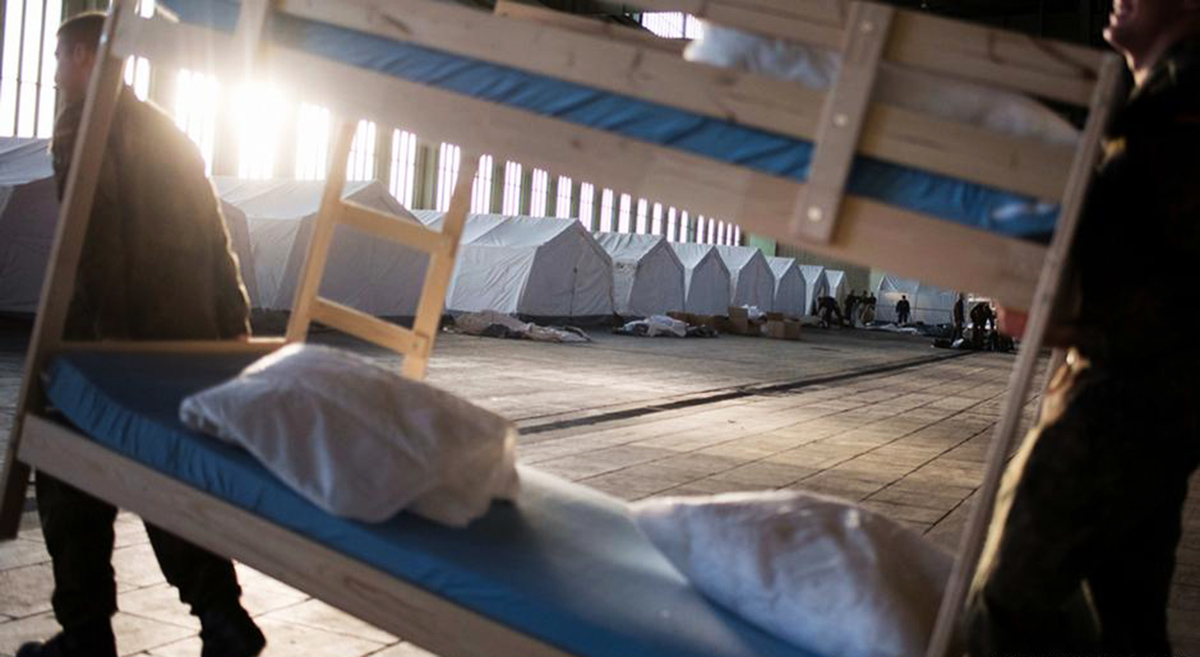
image © alliance / dps / G.Fischer
> via dw.com
